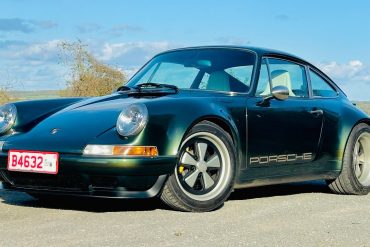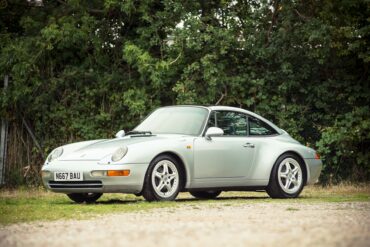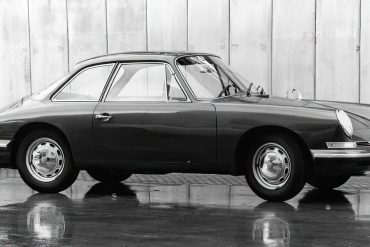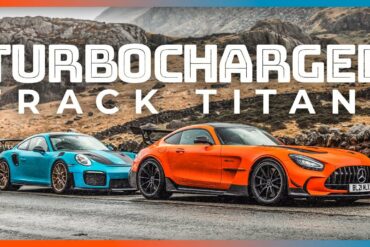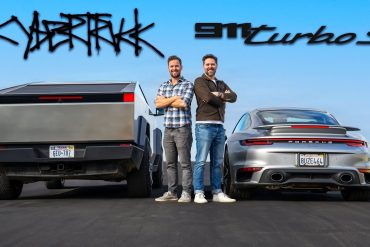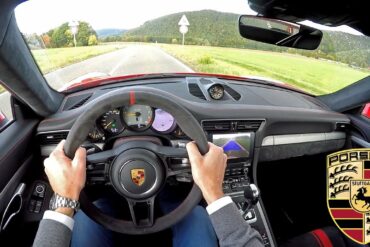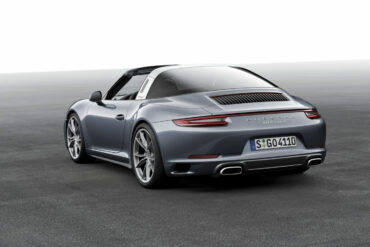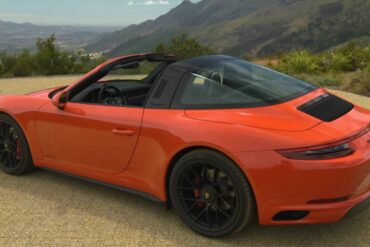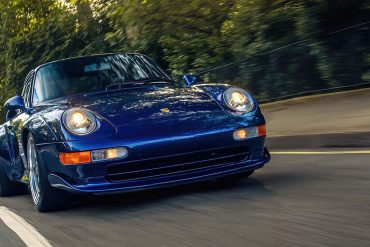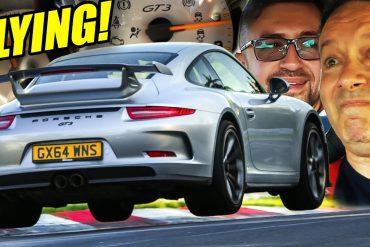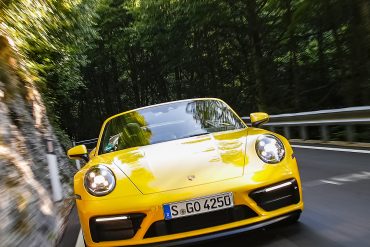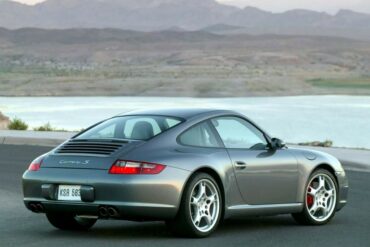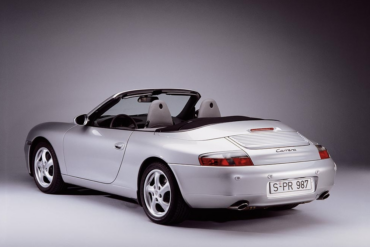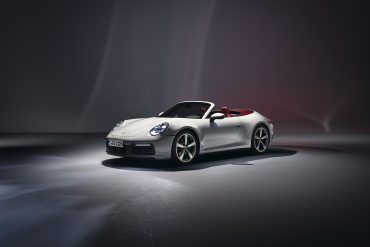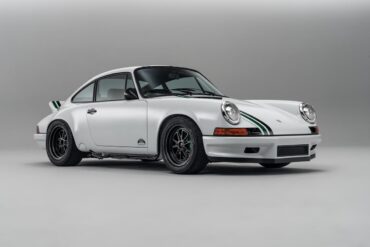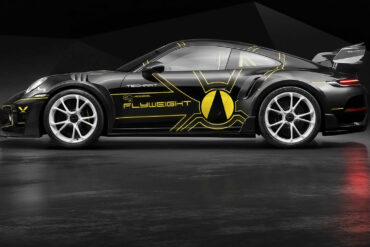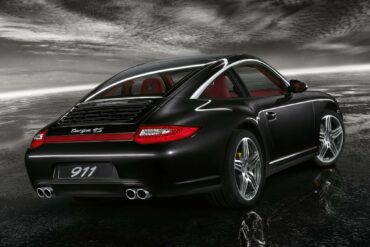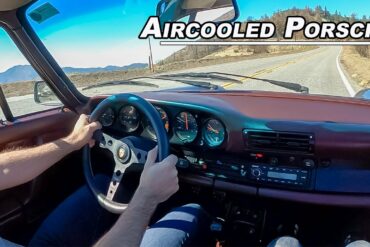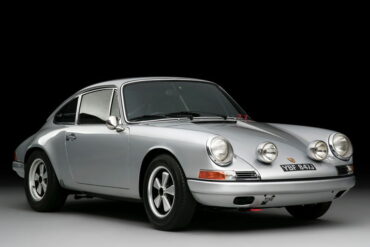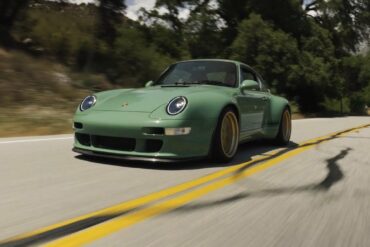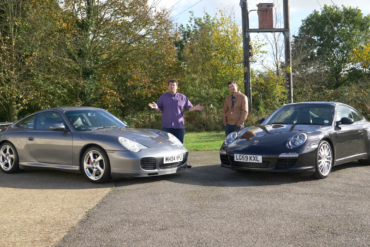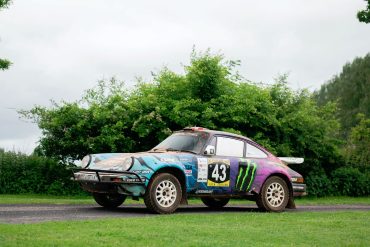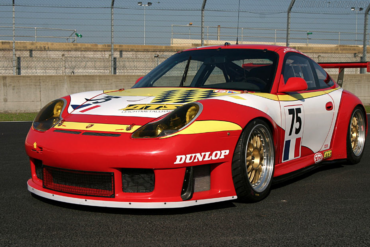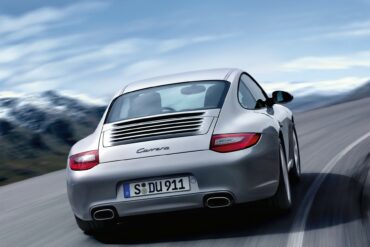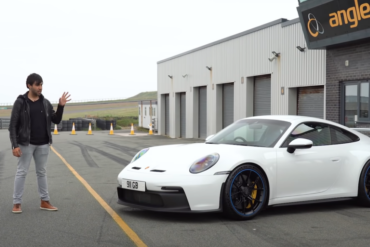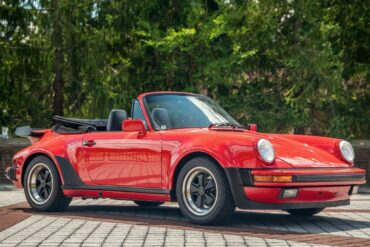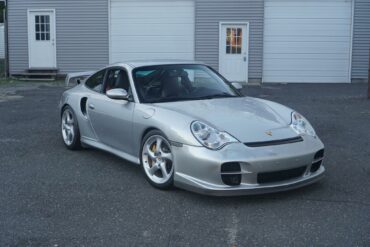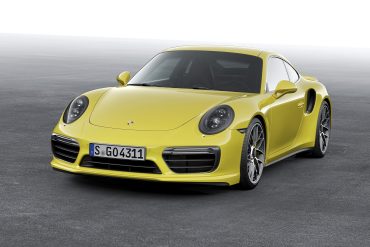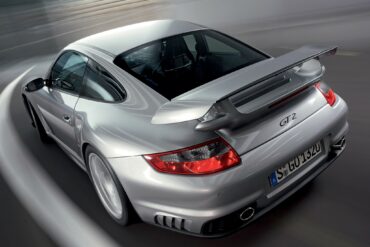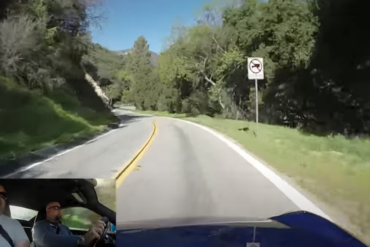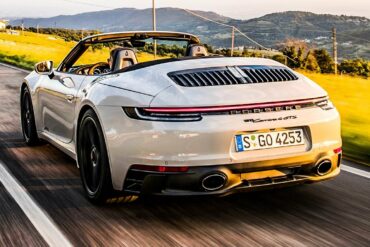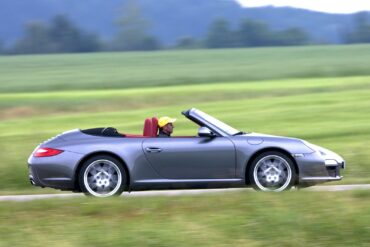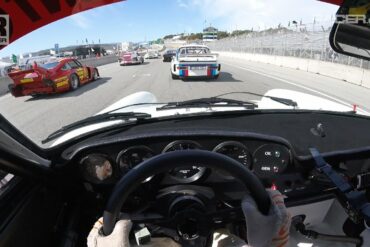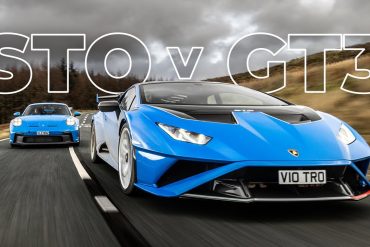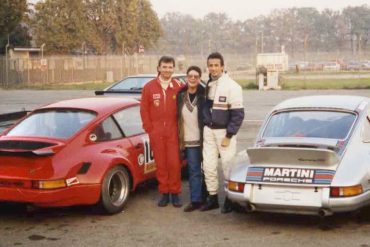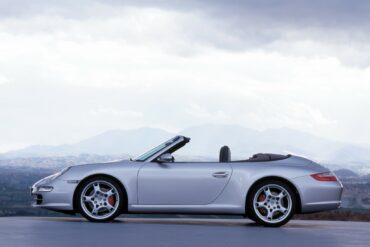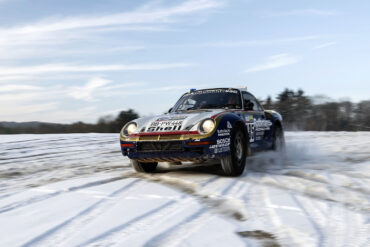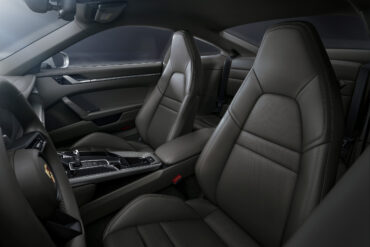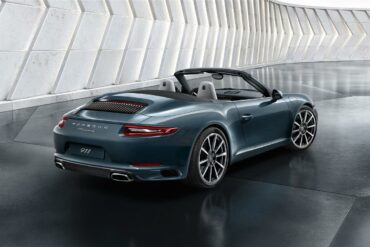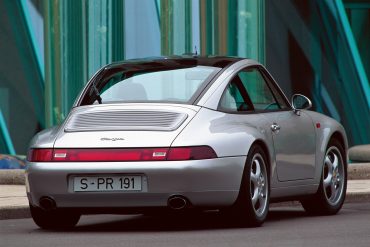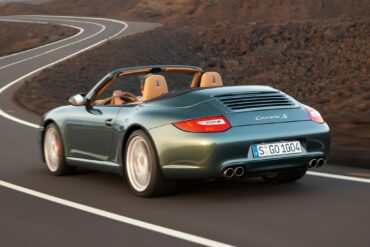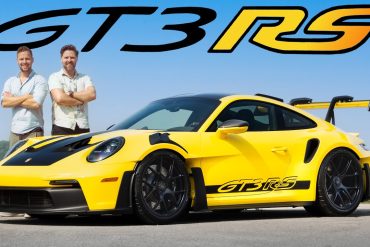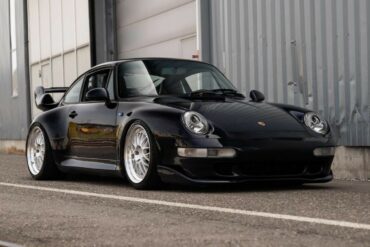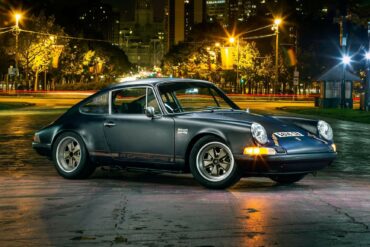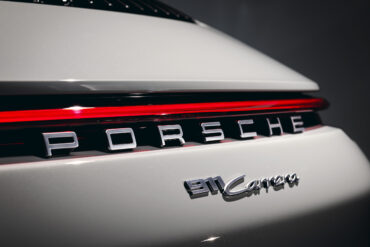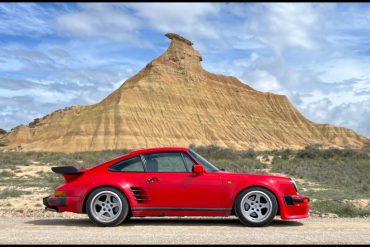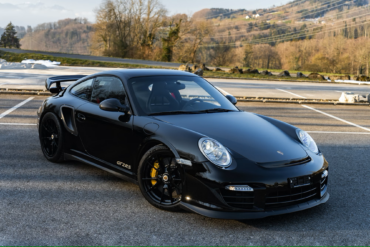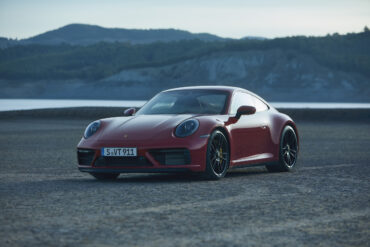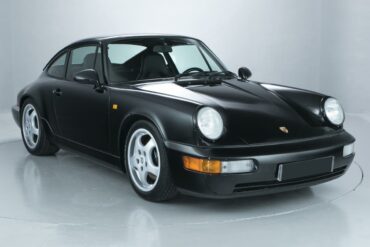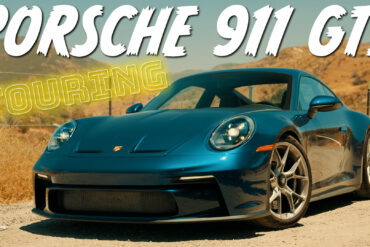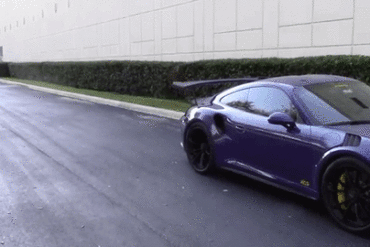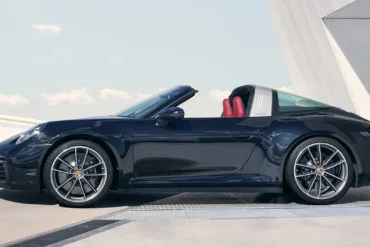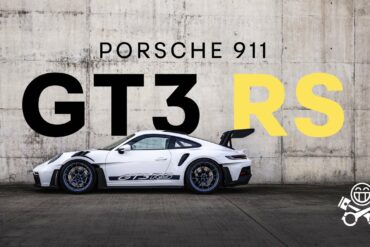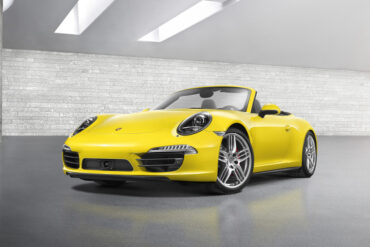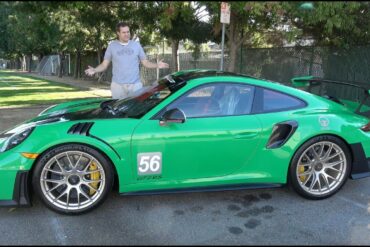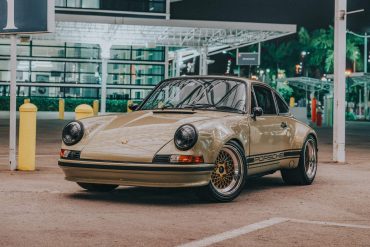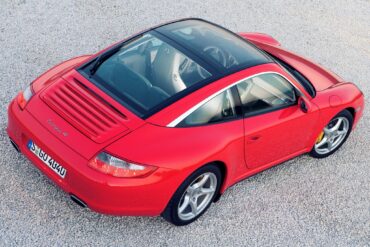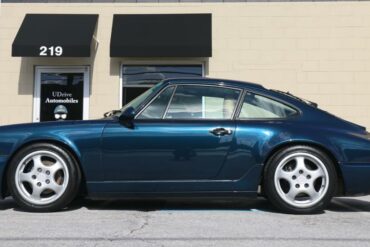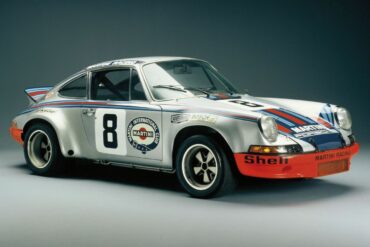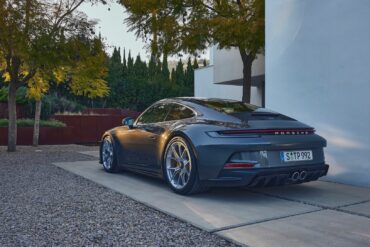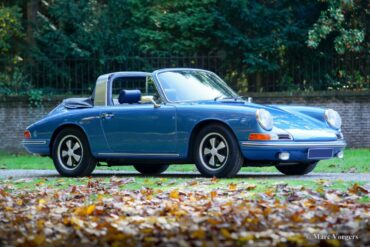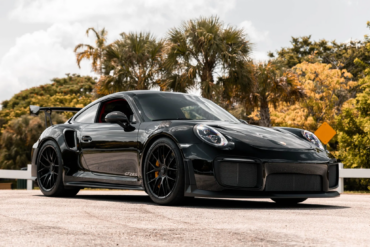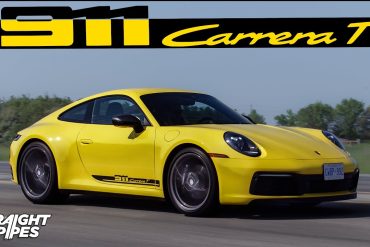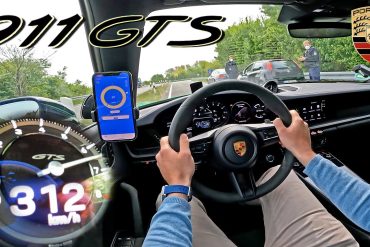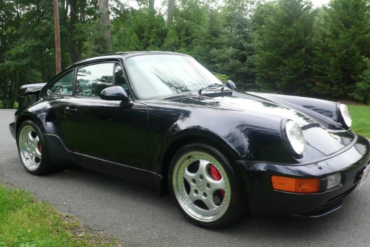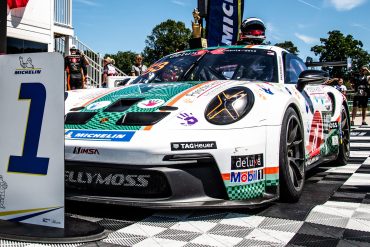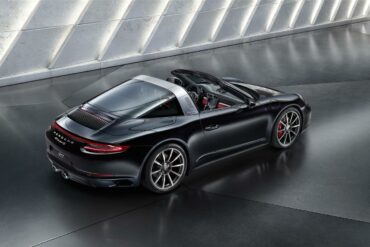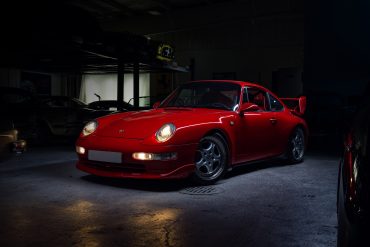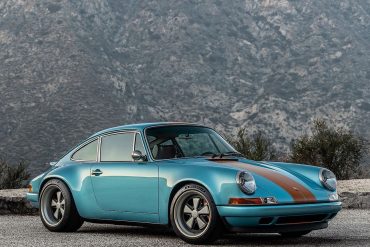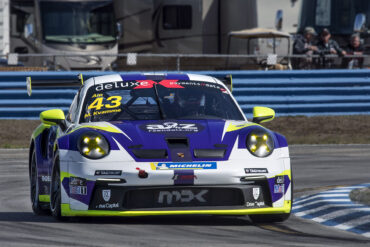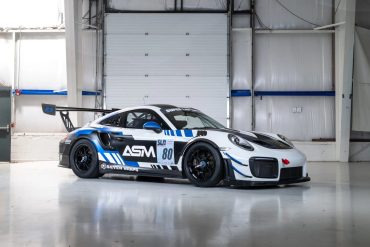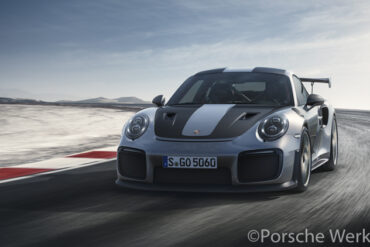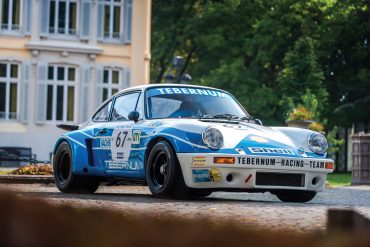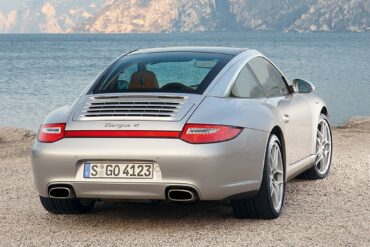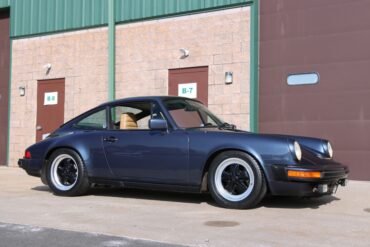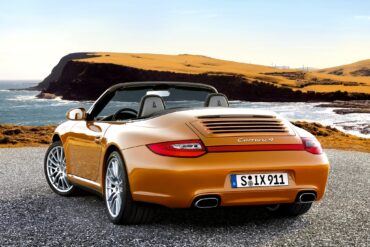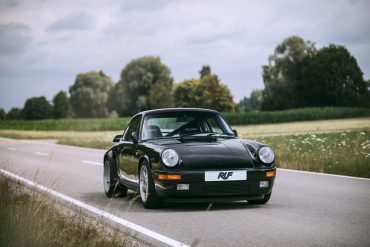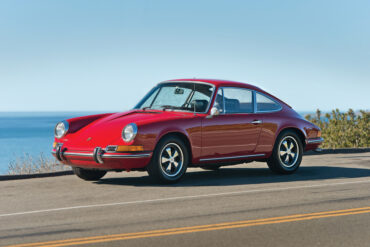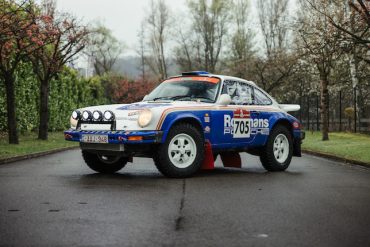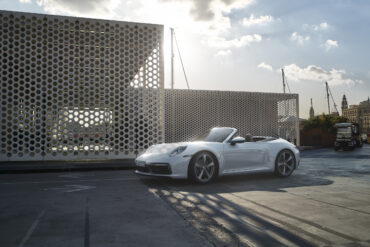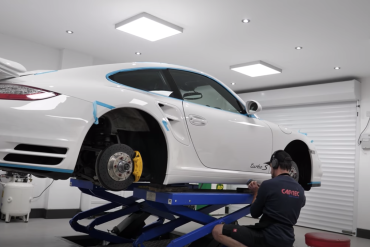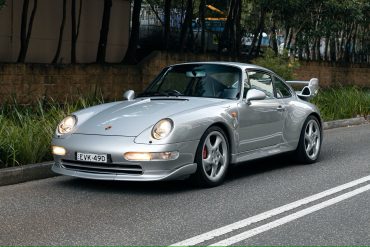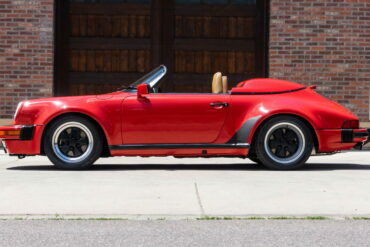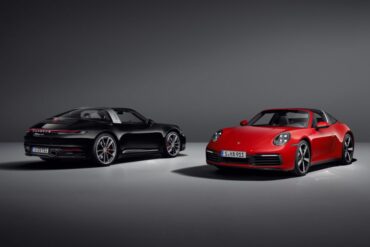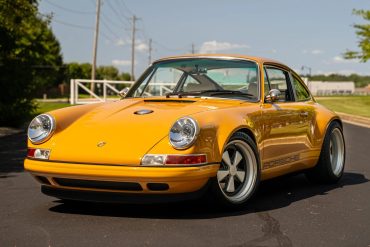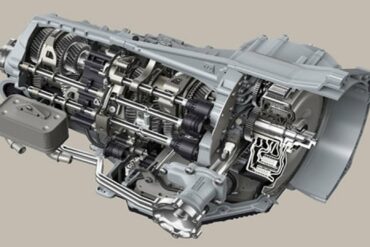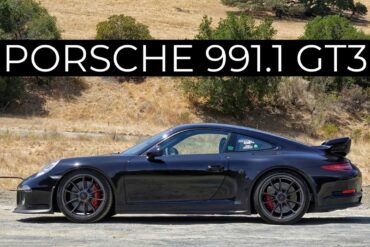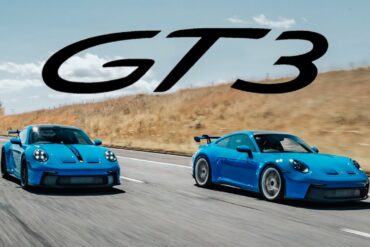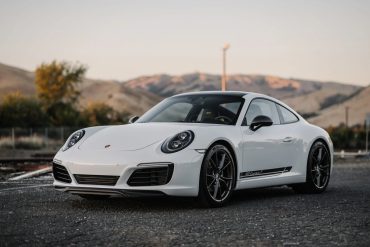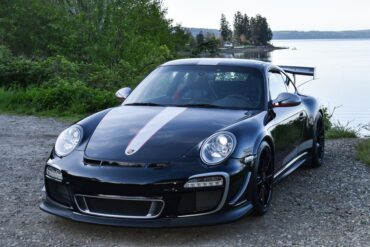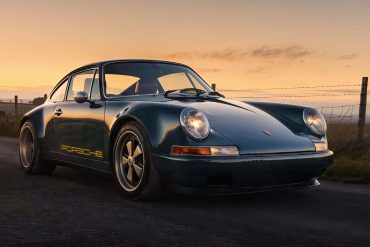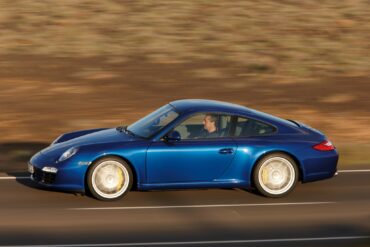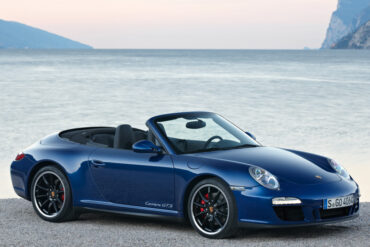In one of the latest videos from Harry’s Garage on YouTube, we get treated to a closer look at the...
Porsche 911
All
- Porsche 912
- 911 Carrera RS 2.7
- Porsche 901 (911)
- Porsche 911 (F-Series)
- Porsche 911 (991)
- Porsche 911 (G-Series)
- Porsche 911 (964)
- Porsche 911 (993)
- Porsche 911 (996)
- Porsche 911 (997)
- 911 Speedster Concept
- Porsche 911 (992)
- 964 Carrera 2
- 964 Carrera 4
- ’30 Jahre’ Anniversary
- 964 Speedster
- 964 Turbo
- 964 Carrera RS
- 964 Carrera Cup
- 964 RSR
- 993 Carrera
- 993 Carrera 4
- 911 Edition 50
- 993 Carrera 4S
- 911 2.0 Bertone Roadster
- 993 Carrera S
- 993 Targa
- 992 Sport Classic
- 993 Turbo
- 996 Carrera
- 993 Carrera RS
- 992 America Edition 911
- 996 Carrera 4
- 993 GT2
- 996 Targa
- 993 Carrera Cup
- 996 Carrera 4S
- 996 Turbo
- 996 Turbo S
- 996 GT3
- 996 GT3 RS
- 996 GT2
- 996 GT3 Cup
- 996 GT3 R
- 996 GT3 RSR
- 997 Carrera
- 996 GT3 RS Race
- 997 Carrera S
- 997 Carrera 4
- 997 Carrera 4S
- 997 Targa
- 911 Carrera 3.0 Coupe (G-Series)
- 997 Targa 4S
- 997 Turbo
- 997 Turbo S
- 997 GT2
- 992 Carrera T
- 997 GT2 RS
- 997 Speedster
- 997 Carrera GTS
- 992 Dakar
- 997 Carrera 4 GTS
- 997 GT3 Cup
- 997 GT3 R
- 997 GT3 RSR
- 997 GT3
- 997 GT3 RS
- 997 GT3 R Hybrid
- 991 Carrera
- 991 Carrera 4
- 991 Carrera S
- 991 Carrera 4S
- 991 Targa 4
- 991 Targa 4S
- 991 Turbo
- 991 Turbo S
- 991 Carrera GTS
- 991 Carrera 4 GTS
- 991 Targa 4 GTS
- 991 911 R
- Porsche 992 GT2 RS
- 991 GT3
- 991 GT3 RS
- 991 GT2 RS
- 991 Speedster
- 991 GT3 R
- 991 GT3 Cup
- 991 RSR
- 991 Carrera T
- 992 Carrera 2
- 992 Carrera 4
- 992 Carrera S
- 992 Carrera 4S
- 992 Targa 4
- 992 RSR
- 992 Targa 4S
- 992 Carrera GTS
- 992 Carrera 4 GTS
- 992 Targa 4 GTS
- 992 Turbo
- 992 GT3 R
- 992 Turbo S
- 992 GT3
- 992 GT3 Touring
- 992 911 S/T
- 911 (G-Series)
- 992 GT3 RS
- 992 GT2 RS
- 992 GT3 Cup
- 911 Carrera 3.0 (G-Series)
- 911 S (G-Series)
- 911 Carrera RSR 2.8
- 911 SC (G-Series)
- Porsche 992 GT3 R Rennsport
- 911 S/T
- 911 Carrera 3.2 (G-Series)
- 911 (Base Model)
- 911 Turbo (930)
- 911 SC Safari
- 911 L
- 911 Carrera RSR Turbo 2.1
- 911 T
- 911 Carrera RSR 3.0
- 911 E
- 911 S
- 911 SC San Remo
- 911 Carrera 3.2 Clubsport
- 911 R
- Porsche 953
- 911 Carrera RS 3.0
- 911 T/R
- 911 Carrera 25th Anniversary
- 911 SC RS
- 911 Turbo LE
- 911 Carrera Commemorative
- 911 Carrera 2.7 (G-Series)
- 911 3.2 Speedster
- 911 Turbo 2.7
- 964 Turbo S
The 2024 Le Mans 24-hour race ended on Sunday at 4 pm with the 111th class win for a Porsche...
1998 Porsche 911 Targa (993) Technical Specifications Engine Type Flat 6 Induction Naturally Aspirated Cooling Air/oil-cooled Valvetrain Single overhead camshaft...
In the vast design world, few names resonate with as much acclaim and distinction as Porsche. While many associate this...
In a recent video, YouTube channel Supercar Driver compare a Porsche 911 GT2 RS against Mercedes-AMG GT Black Series. These...
When Tesla introduced the Cybertruck, they also shared a video featuring the electric pickup drag racing a Porsche 911 while...
Mountain Run in a 991.2 GT3 In this video I take you for a POV test drive behind the wheel...
Originally built by German tuner Gemballa, the Avalanche was more than just a cosmetic upgrade. Boasting a powerful single-turbo engine...
2019 Porsche 911 Targa 4 (991.2) Technical Specifications Engine Engine layout Rear Engine Engine type Boxer, twin-turbo Cylinders 6 Valves per...
The Porsche 911 Carrera GTS is usually updated before a new 911 is introduced. With this Porsche 911 GTS, the...
Homologation yields street missile In response to the emergence of the BPR Global GT Endurance Series and other racing series...
A mixed of fear, adrenaline, excitement, and complete enjoyment is what you’ll experience, especially if you ride shotgun in a...
2022 Porsche 911 Carrera 4 GTS Cabriolet (992) Technical Specifications Model 911 Carrera 4 GTS Cabriolet Design and cylinders Twin-turbo boxer...
BMW M4 CSL vs Porsche 911 GT3 (992) It’s time for an epic RWD showdown! Mat’s got his hands on the...
2008 Porsche 911 Carrera S Coupe (997) Technical Specifications Engine Type Flat 6 Induction Normally-aspirated Cooling Water-cooled Valvetrain Double overhead...
1998 Porsche 911 Carrera Cabriolet (996) Technical Specifications Engine Type Flat 6 Induction Normally-aspirated Cooling Water-cooled Valvetrain Double overhead camshafts...
Removing the roof the car is supposed to have little impact on its chassis stiffness and curvy road prowess, but Porsche tells us that the current generation 911 Cabriolet drives just as well as the coupe. Powering the base Cabriolet is the same impressive turbocharged flat-six engine that makes 379 bhp @ 6500 rpm and 331 ft lbs of torque. The base cabriolet can do the 0 to 60 mph run in 4.2 seconds flat. With the optional Sport Chrono Package that drops to 4.0 seconds.
Le Mans Classic Clubsport Restomod Paul Stephens is considered THE Porsche guy in the UK. Restoration and restomodding is his...
The ultimate bespoke 911? Since 1987, TECHART has been the international premium brand for the individualization and refinement of any...
2011 Porsche 911 Targa 4S (997.2) Technical Specifications Engine Type Flat 6 Induction Normally-aspirated Cooling Water-cooled Valvetrain Double overhead camshafts Injection Direct...
POV In A Great Sounding 911 GVBC is a car enthusiasts dream! Every Friday morning a group of dedicated drivers...
To homologate the 1968 911 for competition purposes, Porsche began with the Spartan 911 T which were a full 54 kg (118 pounds) lighter than their 'S' siblings. Porsche offered clients the opportunity to buy a 911 T outfitted with competition equipment directly from the factory, and the resulting cars have become known as the 911 T/R. They were built in low quantities to a range of specifications depending on their intended competition purposes.
The Gunther Werks 993 The Drive returns to the Gunther Werks headquarters to get an insider’s look at the new...
1984-1989 Porsche 911 Carrera 3.2 Cabriolet Pictures & Gallery...
Which Is a Better First Porsche? 996 C4S vs 997.2 C2 If you’re looking to buy your first 911, and...
Collecting Cars is currently offering a 1978 Porsche 911 SC ‘Safari’ by Tuthill Porsche. It is a great custom competition...
Behind the Wheel of a 964 Carrera 2 Quick review of this beautiful 1990 Porsche 911 964 Carrera 2 manual...
2001 Porsche 911 GT3 RS Race (996) Technical Specifications Type Racing Car Built At Germany Engine Watercooled Flat-6 w/Dry Sump...
2010 Porsche 911 Carrera (997.2) Technical Specifications Engine Type Flat 6 Induction Normally-aspirated Cooling Water-cooled Valvetrain Double overhead camshafts Injection Direct...
First Drives Manual and PDK 992 GT3 at Anglesey Track in Wales : words I never thought it’d utter! A...
The turbocharged 930 was produced from early 1975 was Porsche’s flagship 911 and arguably the most capable supercar of its time....
The power unit featured in the new Porsche 911 GT2 is a high-performance evolution version of the six-cylinder horizontally opposed...
2017 – 2019 Porsche 911 Turbo S (991.2) Pictures & Gallery ...
2008 Porsche 911 GT2 (997) Technical Specifications Engine Type Flat 6 Induction Twin-turbocharged Cooling Water-cooled Valvetrain Double overhead camshafts Injection Port...
Matt Farah Reviews the 991.1 GT3 The latest generation of GT3, the 991. Matt reviews a 2015 Porsche 991 GT3...
2023 Porsche 911 Carrera GTS Cabriolet (992) Technical Specifications Model 911 Carrera GTS Cabriolet Design and cylinders Twin-turbo boxer 6 Number...
2010 Porsche 911 Carrera 4S Cabriolet (997.2) Technical Specifications Engine Type Flat 6 Induction Normally-aspirated Cooling Water-cooled Valvetrain Double overhead camshafts Injection...
POV Drive In A Porsche 911 3.0 Carrera RSR Factory Porsche racer Patrick Long has a million-dollar historic 911 3.0...
The Porsche 992 GT3 is known for its precision, aerodynamics, and a heritage deeply rooted in motorsport. Priced competitively, the...
My first “real” racing car was a Porsche RS/R, which I bought in the mid-1980s. Previously, I had done quite...
2005 Porsche 911 Carrera S Cabriolet (997) Technical Specifications Engine Type Flat 6 Induction Normally-aspirated Cooling Water-cooled Valvetrain Double overhead...
Factory recommissions the famous Porsche 959 Paris-Dakar The recommissioning has been carried out over the past few months by the...
2021 Porsche 911 Carrera 4 Cabriolet (992) Technical Specifications Engine layout Rear Engine Engine type Boxer, twin-turbo Cylinders 6 Valves per...
2016 – 2019 Porsche 911 Carrera Cabriolet (991.2) Pictures & Gallery...
1997 Porsche 911 Targa (993) Technical Specifications Engine Type Flat 6 Induction Naturally Aspirated Cooling Air/oil-cooled Valvetrain Single overhead camshaft...
2012 Porsche 911 Carrera S Cabriolet (997.2) Technical Specifications Engine Type Flat 6 Induction Normally-aspirated Cooling Water-cooled Valvetrain Double overhead camshafts...
Just one look at the 2023 Porsche 911 GT3 RS and you can definitely say that this is a car...
This Swiss based 993 Turbo looks like it has some really nice touches. The perfect stance....
ROCS Motorsports reimagined a 1984 Porsche 911 Carrera Coupe with a custom backdate restoration between 2020 and 2021. The “Philadelphia...
2020 Porsche 911 Carrera Cabriolet (992) Technical Specifications Model 911 Carrera Cabriolet Engine Engine layout Rear Engine Engine type Boxer,...
This AutoTopNL video on YouTube showcases the incredible speed and sound of a unique Porsche 911 restomod built by CSF...
The Porsche 930 makes for a great GT and Harry took his very own special turbo S version on a...
Collecting Cars is currently offering a 2010 Porsche 911 (997.2) GT2 RS finished in black over black leather and Alcantara...
The reality was that in the past you could basically build your own GTS. In the past, Porsche offered an optional factory "power kit" for 911 Carreras, but things are different now. That isn't an option for the 992. The 992 Porsche 911 Carrera GTS is therefore your only pass for accessing a version of the 3.0-liter twin-turbo flat-six tuned up to 473 hp and 420 ft lbs of torque. Those figures are achieved via an approximately 14.5 percent increase in turbo boost pressure.
Porsche 964 VIN Numbers Below is our detailed explanation of the 964 VIN codes. Our easy to use guide should help...
The Porsche 911 GT3 Touring is pretty much anything I could ever want in a sports car. You have amazing...
In case you’re wondering how the GT3 RS came to be known as the “ultimate Porsche 911”, then you should...
2023 Porsche 911 Targa 4S (992) Technical Specifications Model 911 Targa 4S Design and cylinders Twin-turbocharged boxer 6 Bore 91.0...
It is PistonHeads’ John Howell’s turn to be enamored of the new 2023 Porsche 911 (992) GT3 RS. Watch him...
The 2012 Carrera 4S Cabriolet had the same wider rear track when compared to the non-S version of the vehicle. It wasn't something everyone would notice, but the difference was there for a reason, and that reason was the wider tires installed. From behind, a rear red light-strip united the LED taillights. Inside the Carrera 4S Cabriolet, there were some luxury features. The leather-covered sport-bucket seats were covered in leather. Even the rear, unusable, seats were wrapped in leather. The center console was higher to give a sense of a single-seat racing roadster.
Doug Demuro and the 991.2 GT2 RS The 2018 Porsche 911 GT2RS is the craziest Porsche 911 of all time....
This 1979 Porsche 911SC pays homage to the iconic 911 RSR and ST racing cars with a meticulous restoration and...
2007 Porsche 911 Targa (997) Technical Specifications Engine Type Flat 6 Induction Normally-aspirated Cooling Water-cooled Valvetrain Double overhead camshafts Injection...
Porsche Option Codes – Porsche 911 (1994 Model Year) Looking to decode your 1994 Porsche 911 option codes? Want to...
Introduced in 1973, the RSR was a factory-built racing car based on the 911 chassis. The Porsche 911 Carrera RSR 2.8 was the first 911 to ever wear the RSR badge. Homologated for racing by the iconic 1973 Porsche 911 Carrera RS, the RSR’s racing career got off to the perfect start thanks to Brumos Racing’s overall triumph in the 1973 24 Hours of Daytona, while a factory car won the latest ever Targa Florio road race. For the privateer in the mid-1970s who wanted to go sports car racing this was the chosen weapon.
2023 Porsche 911 GT3 Touring (992) Technical Specifications Type Aluminium horizontally opposed and naturally aspirated engine Cylinders 6 Displacement 3,996...
1968 Porsche 911 L Targa 2.0 (SWB) Pictures & Gallery ...
The 991-generation GT2 RS has been called as the pinnacle of the German automaker’s lineup of high-performance road cars. Only...
The 2023 911 Carrera T is Porsche’s model for those that want nothing more than a sports car that wants,...
The 992-generation Porsche Carrera GTS boasts a slight power increase of 473 horsepower and 420 pound-feet of torque, accompanied by a...
19 non 'slant nose' or Package cars were made for the USA only. Very rare. The Porsche factory had 93 Turbo chassis left. These were all transferred to Porsche Exclusiv and hand built as the very special 964 Turbo 3.6 S. They were offered with normal, or ‘Flachbau’ slant nose front ends. While the vast majority of Turbo S’ were fitted with the ‘Flachbau’ nose as a no-cost option, the Turbo S could also be had with the traditional 964 nose as well. In all, 76 Flatnose cars were made while 17 non-Flatnose (known as Package option) cars were made. These cars were also fitted with the X88 option, which increased power to 380 hp.
Vintage and Modern combined Amid a cadre of historic, even legendary, Porsche race and road cars in attendance at Porsche...
2016 – 2019 Porsche 911 Targa 4S (991.2) Pictures & Gallery...
The Carrera RS Clubsport was a track-focused iteration of the Carrera RS with relatively limited road usability. The Clubsport added...
Singer Big Sur Commission We are massive fans of Singer here at Stuttcars. We love every singe car they have...
Photos courtesy Chuck Anderson. For more information, see porschecarreracup.us GALLERY...
Unveiled alongside the 992-generation 911 at the 2018 Los Angeles Auto Show, the 911 GT2 RS Clubsport marked the culmination...
The new Porsche 911 GT2 RS, the most powerful road-approved 911 of all time, celebrated its world premiere at the...
The Carrera RSR 3.0 is one of those rare and super-special Porsches, and one of the most successful Group 4...
The new 911 Carrera GTS is the first street-legal 911 equipped with a super-lightweight performance hybrid. It features a 1.9 kWh...
2009 Porsche 911 Targa 4 (997.2) Technical Specifications Engine Type Flat 6 Induction Normally-aspirated Cooling Water-cooled Valvetrain Double overhead camshafts Injection...
Porsche Option Codes – Porsche 911 (1980 Model Year) Looking to decode your 1980 Porsche 911 option codes? Want to...
2009 Porsche 911 Carrera 4 Cabriolet (997.2) Technical Specifications Engine Type Flat 6 Induction Normally-aspirated Cooling Water-cooled Valvetrain Double overhead camshafts Injection...
The Ruf Yellow Bird is one of the most prolific tuned vehicles and gained notoriety from a Road & Track...
The Porsche 911L (Lux) was introduced in model year 1968 in both Europe and the United States in coupe and targa variants. Approximately 1,610 samples were produced in total, of which 1,169 were coupes, and 575 were Targas. For the 1969 model year, the 911L would cease to exist, paving the way for a new mid-tier offering in Europe and the US, the 1969 911E, and for the higher-end 1969 911S in North America.
There are only a few annual auctions that have built the reputation of having prestigious and quality lot as Bonhams,...
2020 Porsche 911 Carrera 4 Cabriolet (992) Technical Specifications Engine layout Rear Engine Engine type Boxer, twin-turbo Cylinders 6 Valves per...
Detailing a 997.2 Turbo S – Paint Correction, Wheels Off + Modesta Coatings We all know how obsessed we are...
The Porsche 993 Turbo, introduced during the 993 generation of the 911, revolutionized the sports car landscape. With a 400...
Essentially a Carrera 3.2 with a chopped, more steeply raked windscreen and hood, plus a stripped-out interior. Most had wide Turbo bodies. Porsche insisted that the simple hood was not designed to be 100 per cent watertight. The first Porsche 911 Speedster was built in 1989 and it was the last vehicle with the old 911 body. Three decades passed before the Speedster made a comeback. Had a 3.2 L Aircooled Flat 6 and 2274 were produced for the 1989 model year.
This morning, as was teased last week, on Porsche’s own 9:11 Magazine online “TV” channel, the new Type 992 911...
Singer is widely recognized as a top name in the world of Porsche 911 tuning and restoration. Each Porsche 911...
Porsche 911 (997) Transmission Codes The transmission number code is found on the transmission data plate. Code Transmission Model years...
One of the BEST Sportscars Money Can Buy I’ve always wondered if there existed a realistically attainable sportscar that could...
PDK vs Manual 992 GT3 – Which Is Better We are back in North Cumbria for a very special episode...
To the untrained eye, the Carrera T may appear to be a bare-bones and sparingly equipped 911 at first glance. With a...
2009 – 2012 Porsche 911 GT3 & GT3 RS (997.2) Service Schedule (3.8 L & 4.0 L) This maintenance service...
The esteemed UK firm, Theon Design, known for their custom reconfigurations of the iconic Porsche 911, has recently unveiled a...
2010 Porsche 911 Carrera S Coupe (997.2) Technical Specifications Engine Type Flat 6 Induction Normally-aspirated Cooling Water-cooled Valvetrain Double overhead camshafts...
The GTS was powered by the same engine that was installed under the limited-edition Porsche 911 Sport Classic, but it was offered with more options. It wasn't just a driver's car, it was built for the passenger as well, with more options for comfort. From the outside, the Carrera GTS Cabriolet featured the same wide body as the Carrera 4 Cabriolet. At the front, the sport design apron featured a black lip-spoiler underneath. The Carrera GTS logo was painted on the doors. In the back, the car was fitted with LED taillights and four-round exhaust pipes. The 19” light-alloy wheels with central log-nut were fitted as standard.


